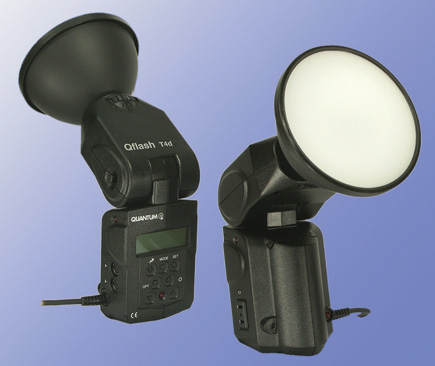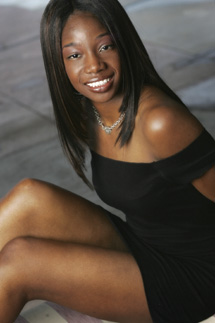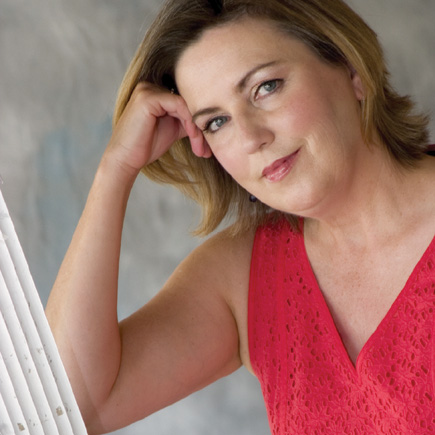Quantum's Leap
The Qflash T4d Digital
All Photos © 2004, Joe Farace, All Rights Reserved
The Quantum Qflash T4d Digital is a serious flash unit that combines the form factor and user interface of the kind of high-end flash units that camera manufacturers charge big bucks for with the kind of power normally found in small monobloc studio strobes. Then there's that removable reflector that permits the kind of flexibility not typically found in any shoe-mount flash. But, you see, the Qflash T4d Digital doesn't have a shoe, because the company feels that its size and weight (23 oz) are not suitable for on-camera mounting. In its place is the ubiquitous 1/4" thread, allowing it to be mounted on a light stand, tripod, grip, or the many supports offered by Bogen Imaging Inc. or Avenger (www.bogenimaging.us). No AA batteries for this puppy either, the Qflash T4d Digital can be powered by a Quantum Turbo, Turbo Compact, or the Turbo 2x2 I tested not only with the Qflash but on location with a Photogenic studio strobe (see sidebar below).

What's New Pussycat?
The new Qflash Digitals (aside from the T4d is the X4d) are smaller and lighter
than their predecessors. The head swivels up and down and left and right and
locks into position with one button. Like your expensive manufacturer's
flash, the Qflash T4d Digital is compatible with the latest digital and film
cameras from Nikon, Canon, Contax, Mamiya, and others. When used with the appropriate
QTTL adapter, Qflash Digital flashes display and track the camera f/number and
film speed set in the camera; allow for rear curtain sync; and provide infrared
autofocus assist. (See Quantum's website, www.qtm.com, for the camera
compatibility of QTTL adapters with your camera.) Digital and film cameras that
employ pre-flash metering are supported by the adapters. You can change the
flash's output between -3 to +2 stops in 1/3-stop increments. Even if
your camera doesn't support fill/flash ratio, the QTTL ratio setting tracks
the camera aperture as it changes, providing automatic fill/flash ratio that
I found to be indispensable for a "shoot-and-scoot" photographer
like me.
 |
|
|
In addition to full dedication, the Qflash T4d Digital can be used in Manual,
Auto, TTL, and Strobo(scopic) modes. In Auto mode, the Qflash's power
can be adjusted in 1/3 stops over a wide range--f/1.4-f/22 for ISO 100
film--in 25 settings. In Manual mode, the Qflash displays 19 power settings
from full to 1/64 power, in 1/3-stop increments. In Automatic and Auto-Fill,
over/underexposure values are shown in 1/3-stop increments on the LCD read-out.
The Qflash "Program" mode gives you instant access to your most
frequently used settings. Preset any mode (Auto, Manual, QTTL, Strobo, Main/Remote)
and any settings (f/stop, ISO, power, etc.) into as many as eight memory positions.
Then, when you're on location, a single button push jumps from one preset
memory to the next one. You can quickly change your presets to follow fast action
like runway shots.
Wanna use multiple flash setups? The Qflash's twin accessory sockets accept
cables that will connect multiple Qflash units and control a "main"
and two "remote" Qflashes from one position. You can connect additional
cables to the remote flashes to add more than two remotes. Qflashes can communicate
and coordinate through these cables or wirelessly via Quantum's FREEXWIRE
digital transceivers.
 |
|
|

































